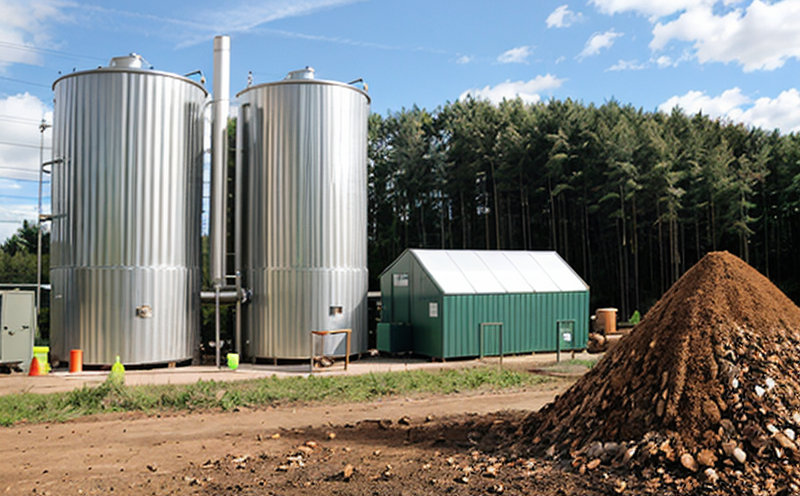ASTM E887 Particle Size Distribution of Biomass Fuels
The ASTM E887 standard practice is a critical tool in the evaluation and quality control of biomass fuels intended for waste-to-energy conversion. This method provides a detailed particle size distribution analysis, which ensures that the fuel meets the required specifications for efficient combustion processes.
Understanding the particle size distribution (PSD) of biomass fuels is essential because it directly impacts the efficiency and performance of waste-to-energy systems. Smaller particles have a larger surface area, which enhances combustion by increasing the rate at which oxygen can react with fuel components. Conversely, excessively fine particles may lead to issues such as ash accumulation or slagging in boilers.
The ASTM E887 methodology involves several steps, including sample preparation and conditioning, sieving techniques, and calculation of cumulative distribution curves. Sample preparation ensures that the material is representative of the entire batch, minimizing variability between samples. Sieving requires precise equipment capable of handling various particle sizes, often down to sub-micron levels.
The ASTM E887 standard also specifies the use of specific sieves with defined aperture sizes, typically ranging from 400 microns to less than 1 micron. These sieves are used in a series of steps where samples are passed through each sieve, capturing fractions that fall within certain size ranges. The weight of material retained on each sieve is then calculated and plotted against particle size.
The resulting cumulative distribution curve provides critical information about the PSD, allowing for detailed analysis. This data can be used to optimize fuel blending processes, ensuring a consistent feedstock for energy conversion systems. Additionally, it helps in identifying any potential quality issues that could affect system performance or efficiency.
Compliance with ASTM E887 is crucial for industries involved in waste-to-energy and biomass utilization. It ensures that the fuels meet stringent quality standards set by regulatory bodies like the European Commission's Renewable Energy Directive (RED) and the United States Environmental Protection Agency (EPA). Meeting these standards not only enhances operational efficiency but also supports environmental sustainability goals.
Quality managers, compliance officers, R&D engineers, and procurement specialists rely on ASTM E887 to maintain high-quality biomass fuels. This ensures that the fuels are suitable for efficient combustion processes while minimizing emissions and maximizing energy recovery.
Industry Applications
The application of ASTM E887 extends across multiple sectors, including power generation, waste management, and bioenergy production. In these industries, accurate particle size distribution analysis is vital for optimizing fuel performance and ensuring compliance with environmental regulations.
- Power Generation: Ensures efficient combustion in boilers, reducing emissions and improving operational efficiency.
- Waste Management: Helps in the preparation of waste-derived fuels, contributing to circular economy goals.
- Bioenergy Production: Supports the development of biofuels by ensuring consistent fuel quality.
By leveraging ASTM E887, these industries can enhance their sustainability efforts while maintaining robust operational practices. The method's precision and repeatability make it an indispensable tool in the continuous improvement of biomass utilization processes.
At Eurolab, we bring unparalleled expertise to ASTM E887 particle size distribution testing for biomass fuels. Our team of highly skilled professionals ensures that every test is conducted with the highest standards, delivering reliable and consistent results.
- Accurate Sample Preparation: Our state-of-the-art facilities allow for precise sample preparation, ensuring representative samples are used in analysis.
- Advanced Sieving Equipment: Utilizing cutting-edge sieves with defined aperture sizes ensures accurate particle size determination.
- Detailed Reporting: Comprehensive reports provide a thorough breakdown of the particle size distribution, aiding in informed decision-making.
- Compliance Assurance: Ensuring that all tests meet international standards like ASTM E887 and other relevant directives supports regulatory compliance.
We pride ourselves on providing not just accurate data but also actionable insights that can drive process improvements and enhance overall performance. With Eurolab, you can rely on consistent quality testing to support your operational excellence goals.
Use Cases and Application Examples
- Optimizing Fuel Blending: By analyzing particle size distribution, fuel blends can be optimized for consistent performance across different batches.
- Enhancing Combustion Efficiency: Precise particle size analysis ensures that fuels ignite efficiently and completely, reducing incomplete combustion emissions.
- Monitoring Quality Control: Regular testing helps in monitoring the quality of biomass fuel throughout its lifecycle, from procurement to final use.
- Regulatory Compliance: Meeting ASTM E887 standards supports compliance with international directives like RED and EPA regulations.
In conclusion, ASTM E887 is a cornerstone for ensuring high-quality biomass fuels in waste-to-energy systems. Its application across various industries underscores its importance in supporting sustainability goals while enhancing operational efficiency.





